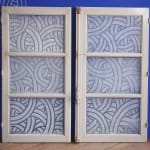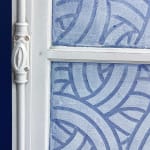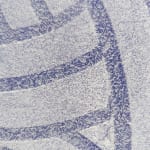


Jordane Saget
Further images
This work, created on a support from the deconstruction site of a school in La Courneuve, evokes the dreamy look from the back of the classroom, but also and above all, echoes the global context of confinement that we experience, intermittently, as a window ajar on the world.
During the first confinement, Jordane Saget asked his audience to send a photo of their point of view. The result: hundreds of photos reworked by the artist and embellished with her rounded lines. The project became a book, sold to the benefits of the Restos du Cœur charity: 56 Days.
"It was a time of paradoxes and contradictions. It was a time of isolation where the relationship with the other has never seemed so structuring. It was a time of fear and a time of courage; a time for oneself and a time for others; a time for the individual and the group, a time of calm and a time of chaos. These 56 days were our history. "
Jordane Saget
Jordane Saget has always been working with sober and non-intrusive materials such as chalk or Blanc de Meudon, in the streets and in the subway.


